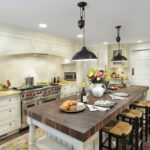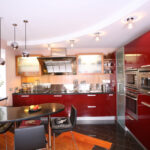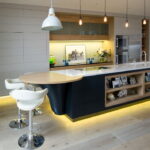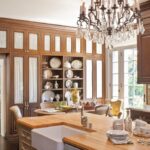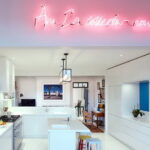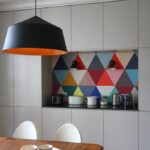How to choose the right lamp over the table in the kitchen
For most people, the kitchen is the place where absolutely all family members gather in the morning and after a hard day at work. Therefore, the lighting above the dining table in the kitchen plays an important role. It can create additional comfort, enveloping everything in a special atmosphere. And it can cause negative emotions due to a lack or too strong light.

- Basic requirements for lighting the dining and kitchen area
- The main rules and principles of the arrangement of lamps above the table
- Varieties of lighting devices
- How to choose the right lamps and chandeliers
- Location options
- Video: 3 rules for lighting in the kitchen
- Photo 50 design and decoration options for lighting in the kitchen
Basic requirements for lighting the dining and kitchen area
The kitchen lamp above the table must meet basic lighting requirements. Therefore, it is necessary to carefully consider the choice of lamps and their location.
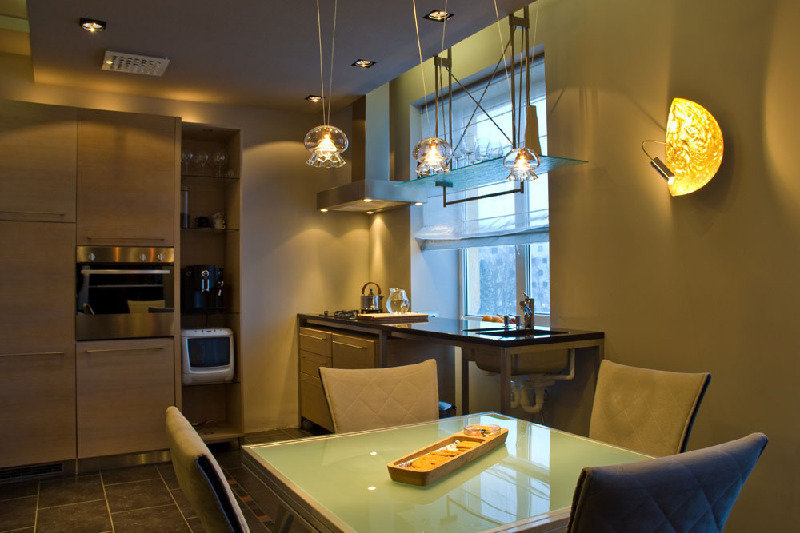
The following aspects should be adhered to:
- The refreshment should be uniform throughout the room. Small ceiling lights or a large one, but only one, can help with this.
- Everything should be illuminated: cabinets, shelves, niches.
- Lighting must correspond to 500 Lux. No more and no less.
- The main task is to maintain daylight at any time of the day.
- The work area (sink, work surface, countertop and stove) should be illuminated with additional lighting.
- Spotlights or LED strip are built into wall cabinets.
- High-quality lighting is provided by luminaires with direct light.
- Lighting should not dazzle when turned on and in the room.
- When choosing between warm and cold, it is better to give preference to warm light. It looks more like daytime.
- Track lights can be used. They are mobile and can be placed in any area. The light from them is directed and diffused, which allows for better perception. Thanks to the convenient function of dimming the light flux, the cooking process becomes much easier and safer.
- Above the stove and sink, a lighting device in the form of a single lamp or LED strip must be installed.
- You can additionally pass light through the hood.
- The working area should be illuminated at 550-670 Lux.
- The dining area is illuminated by both general light and additional lamps.
The main rules and principles of the arrangement of lamps above the table
If the layout of the kitchen allows, then it is better to put the table closer to the window. So, in addition to artificial light, there will be natural. Artificial light should not irritate the eyes, it should be soft and moderately bright. Therefore, the most correct solution will be dim warm light bulbs.

If the table is located against the wall or just far from the window, then the room can be supplemented with wall sconces or floor lamps with direct light. Decorative lighting fulfills not only its direct purpose, but also interestingly decorates the interior of the kitchen. The ceiling light is considered to be the most powerful and efficient. Wall sconces should be placed above human eye level to create the effect of light from the ceiling, not from the wall.

If the table is in the middle, then it will be easy to illuminate it with a single ceiling chandelier, which will be located directly above it. A simple light bulb will not look very nice, so it is better to decorate the chandelier with a fabric, glass or plastic lampshade, depending on what is more suitable for the interior.
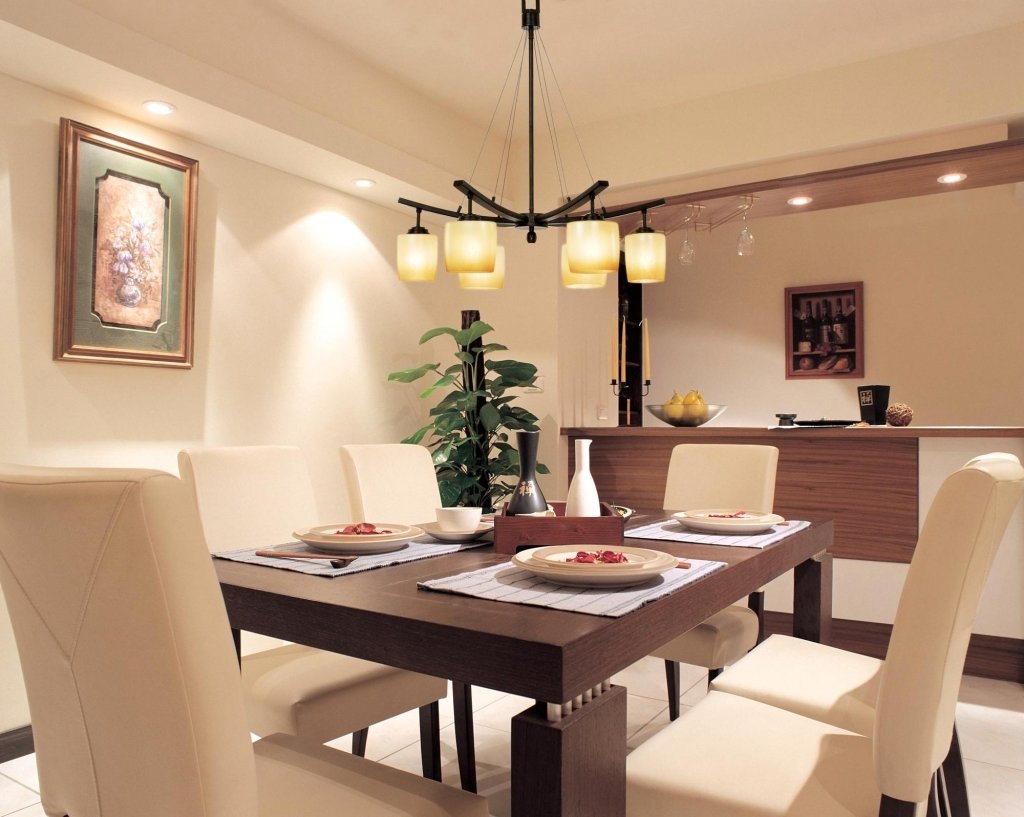
The center color option is suitable for round and square tables. It is better to choose shades made of frosted glass. They gently scatter light throughout the room and do not harm your eyesight. The chandelier should be placed at a height of 1.2-1.5 meters above the table. This is the optimal height option, which illuminates well and does not irritate the organs of vision.
Varieties of lighting devices
Lighting in the dining area above the kitchen table can be done in any variation. To form a full-fledged correct lighting, it is better to combine several types of lighting devices at once. This will make it much easier to adjust the light intensity in the room.

For the kitchen, three types of lamps are most often used that meet all regulatory requirements:
- Incandescent lamps. They are durable and flicker free. Does not have a negative effect on the eyes. A pleasant bonus will be the low price for the lamps themselves and subsequently their inexpensive maintenance.

The most famous are incandescent lamps. They cost little, look compact and are not afraid of too high or too low temperatures. - Luminescent. They are also very durable. With their help, imitation of various tint backlights is carried out. Provide soft light output.
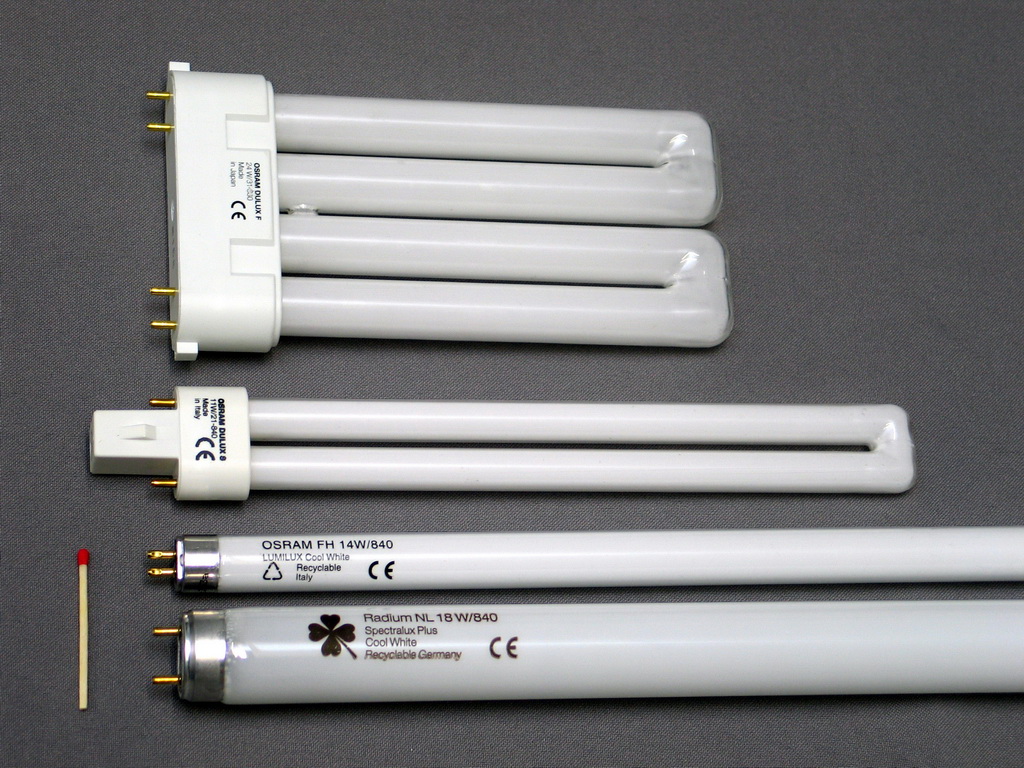
Fluorescent lamps have a long service life and create pleasant diffused light. - LED. Also an economical option. They can be located around the entire perimeter of the kitchen. Installation is much easier than other options. The ergonomic way of illumination does not harm your eyesight, as it is most often located closer to the ceiling. Creates a daylight effect.

Some models allow you to change the direction of the light flux, which allows you to change the atmosphere in the kitchen, replacing the general lighting with local lighting.
How to choose the right lamps and chandeliers
The best option would be a compact chandelier that will perfectly match the style of your kitchen interior. The light intensity depends on the shape of the ceiling light. Therefore, it is better to choose open options so that the light can be scattered throughout the room. The material of the lamp in the kitchen should not be afraid of humidity and temperature drops. It is quite difficult to care for fabrics. The best option would be a frame made of metal or glass.
Location options
When considering placement options, it is important to keep in mind that the light should be as natural as possible. If the walls in the kitchen are light, then fewer lighting fixtures can be used.

The main lighting should be on the ceiling. The main thing is just to choose what it will be: a single chandelier or LED strip around the entire perimeter. A long kitchen can be lit with several small chandeliers all over the ceiling, which will be arranged in a row.

Separate lamps are located above the dining area, which will only correspond to this area. The entire working surface is fully illuminated. It is important to highlight all areas, including the lockers.
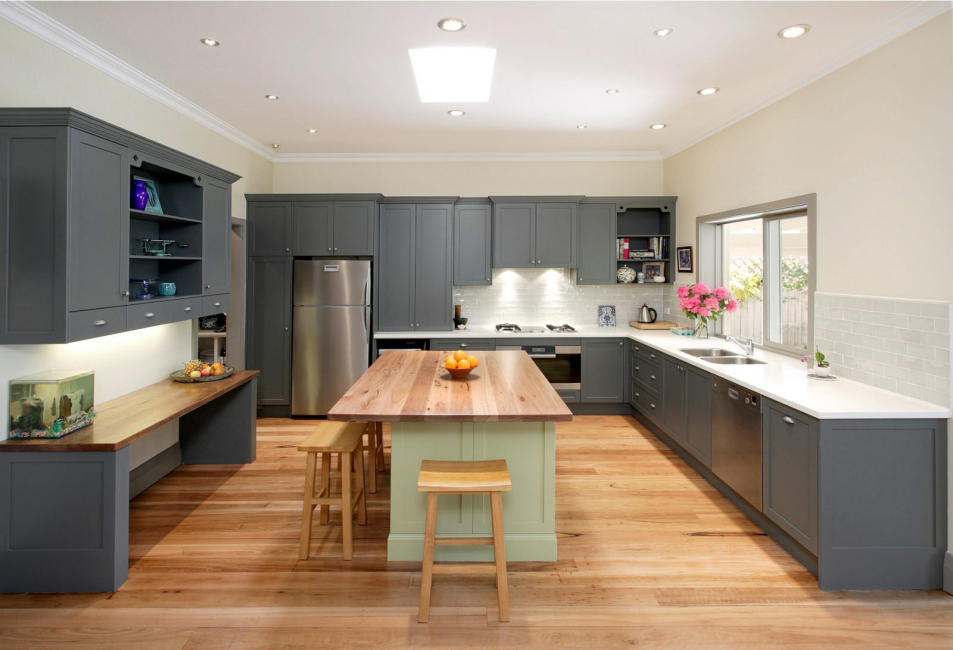
Lighting in any room must comply with regulatory requirements and not harm your eyesight. It is imperative to place light bulbs throughout the room, capturing all zones. Everyone chooses the type of lighting device himself, starting from the functions that must be performed.

Video: 3 rules for lighting in the kitchen

